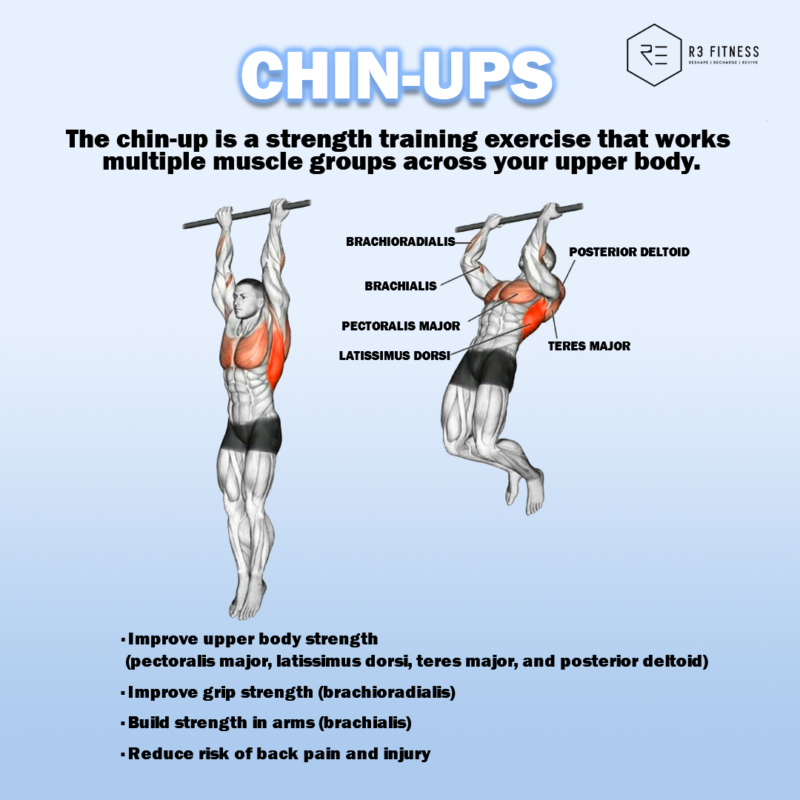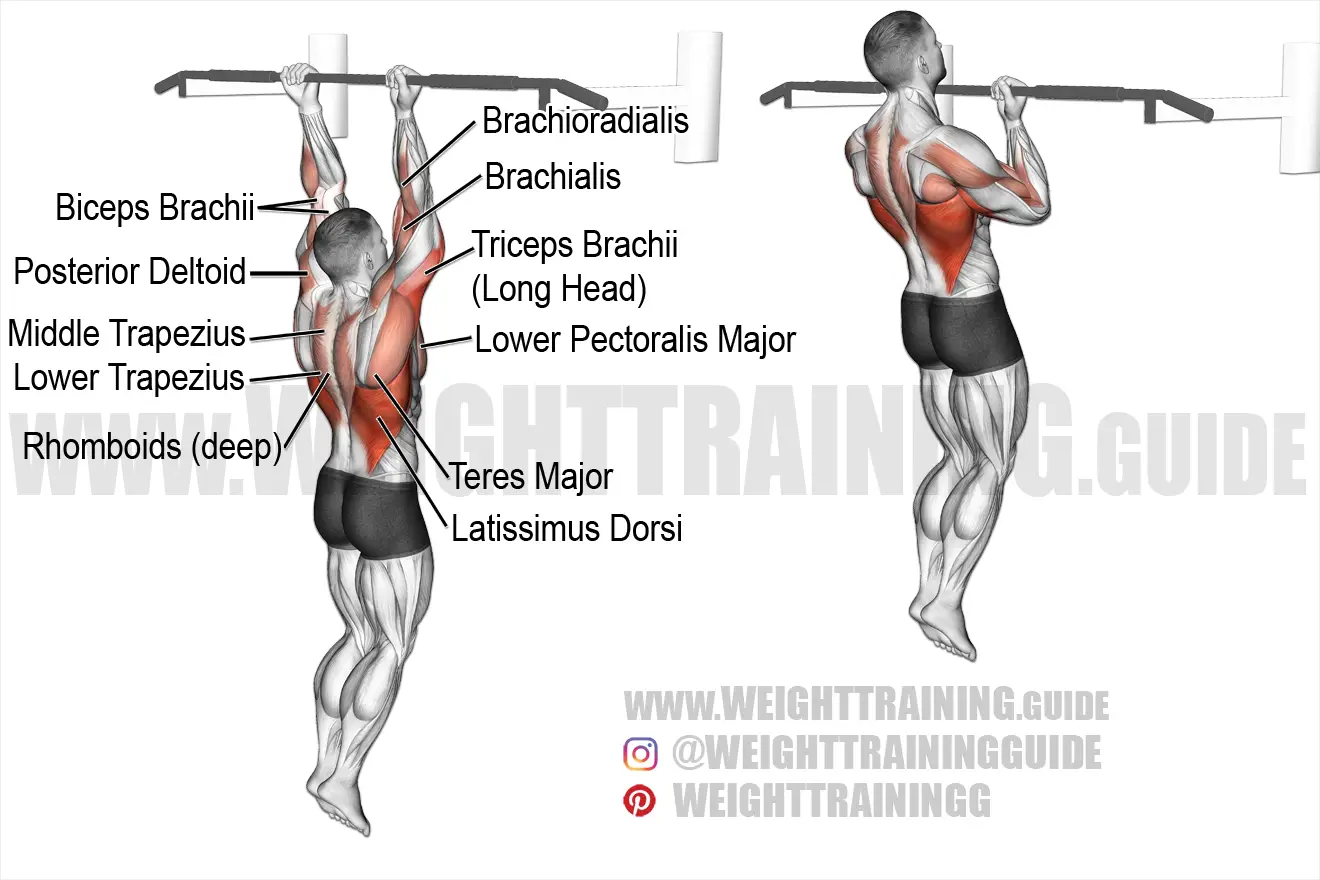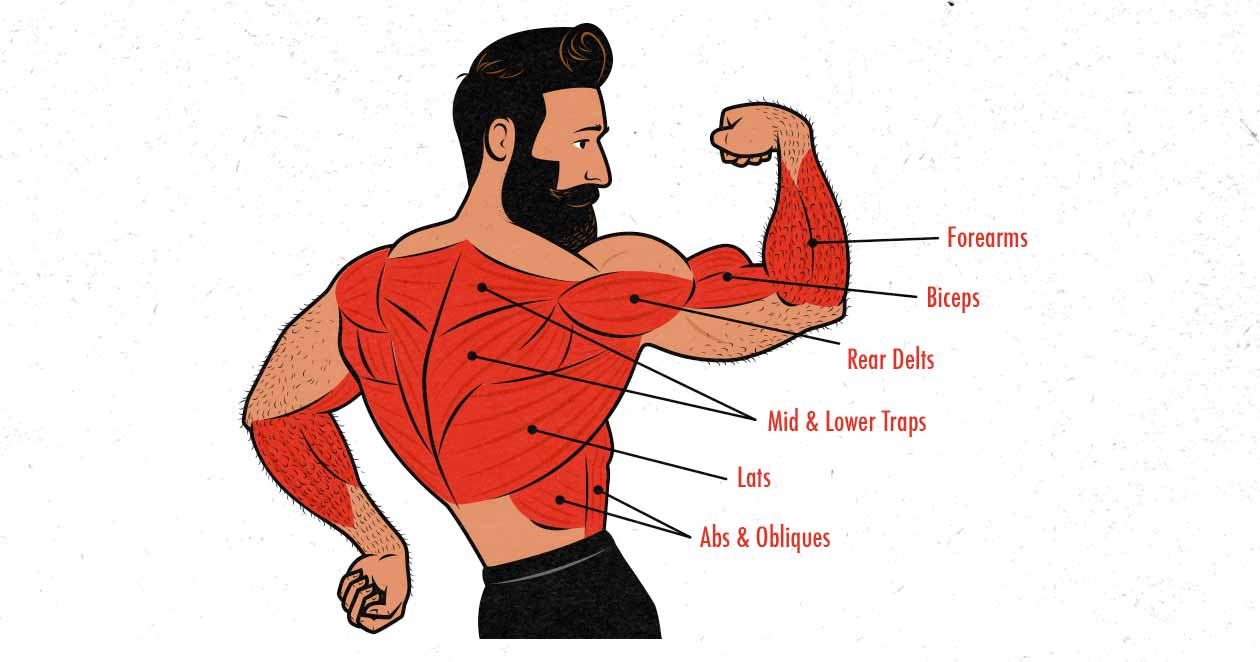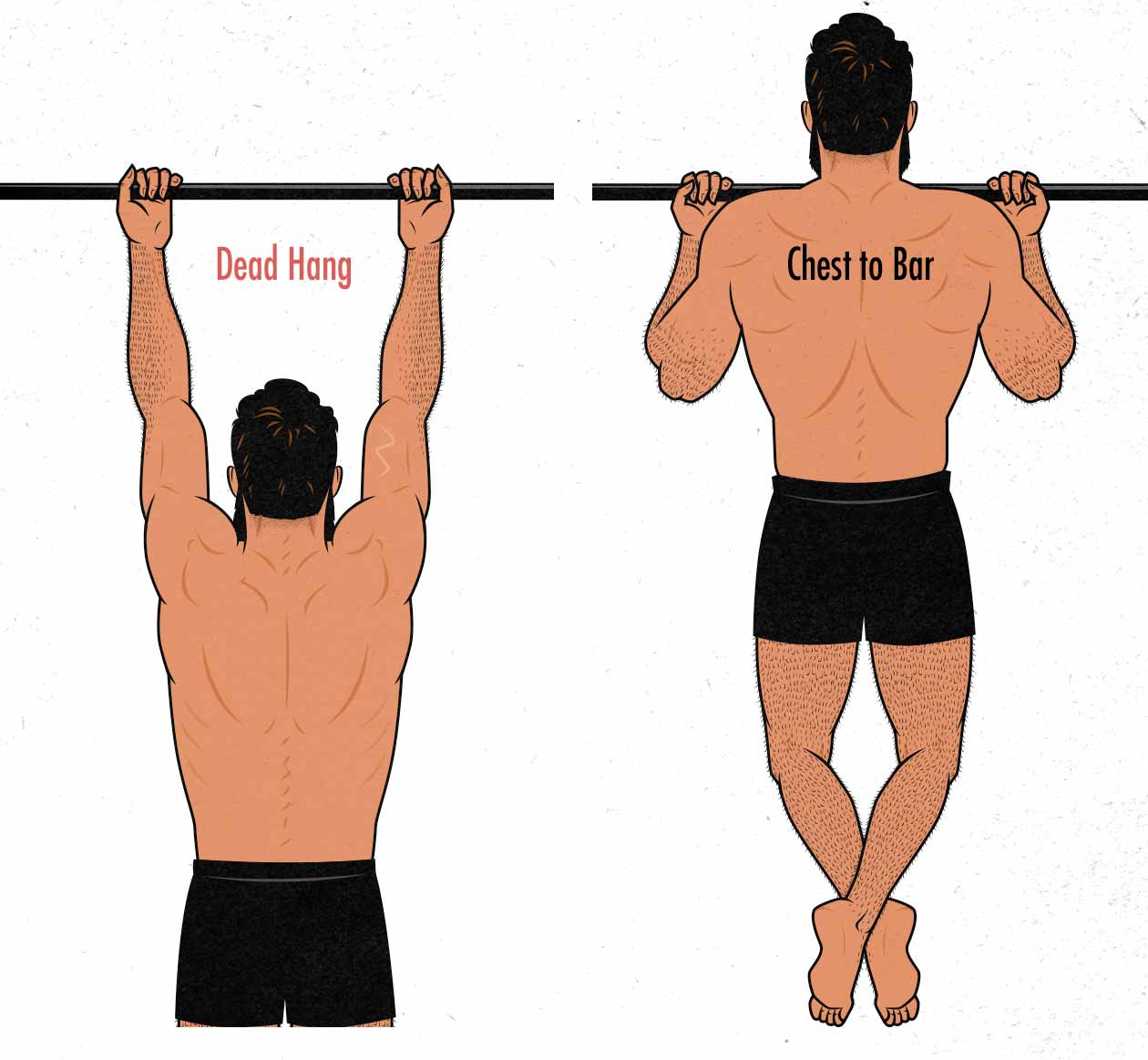Are you curious about whether chin-ups can help to strengthen your triceps? Well, you’re in the right place! If you’ve been hitting the gym regularly and have been wondering if chin-ups are worth incorporating into your workout routine, this article will provide you with all the information you need.
Chin-ups are a popular exercise for developing upper body strength, but many people associate them more with building back and biceps muscles rather than triceps. However, you might be surprised to learn that chin-ups can actually have a positive effect on your triceps strength as well. While the primary muscles targeted during chin-ups are the back and biceps, the triceps also play a significant role in the movement.
As you pull yourself up, your triceps engage to stabilize your elbows and assist in the pulling motion. By including chin-ups in your workout routine, you can simultaneously work on developing both your back and triceps muscles.
In the upcoming article, we will delve deeper into why chin-ups are beneficial for triceps strength and discuss proper form and variations to maximize the triceps engagement. So, if you’re curious about the impact that chin-ups can have on your triceps and want to learn more about incorporating them into your fitness routine, keep reading!
Chin-ups are often associated with working the muscles in your back and biceps, but did you know they can also have a significant impact on your triceps strength? In this article, we will explore the benefits of chin-ups for triceps strength, proper technique to target the triceps effectively, and how they compare to other triceps exercises. We will also discuss the importance of triceps strength, common mistakes to avoid, and tips on incorporating chin-ups into your triceps workout routine.
Additionally, we will cover other factors to consider for triceps strength, how to overcome plateaus, and safety precautions for injury prevention. So if you’re looking to boost your triceps strength, keep reading to discover the true potential of chin-ups.

Benefits of Chin-Ups for Triceps Strength
Engaging Multiple Muscle Groups
Chin-ups are a compound exercise that engages multiple muscle groups in your upper body, including your back, biceps, and triceps. When performing a chin-up, you are required to stabilize your body, which activates several muscles simultaneously. This increased muscle engagement results in a more effective and efficient workout for your triceps.
Promoting Triceps Activation
As you pull yourself up during a chin-up, your triceps play a crucial role in helping you complete the movement. This activation of the triceps helps to strengthen and tone these muscles, leading to improved triceps strength and aesthetics.
Building Triceps Strength
Chin-ups are a challenging exercise that requires significant upper body strength. By incorporating chin-ups into your triceps workout routine, you can gradually increase the load on your triceps, leading to improved strength over time. With consistent practice and progressive overload, you can achieve impressive triceps development through chin-ups.
Proper Technique for Chin-Ups to Target Triceps
To effectively target your triceps during chin-ups, it is essential to maintain proper technique. Here are some key points to consider:
Maintaining a Full Range of Motion
Ensure that you start each rep with your arms fully extended. As you pull yourself up, focus on engaging your triceps and bringing your chest closer to the bar. This full range of motion allows for maximum triceps activation and ensures that you are working the muscles to their full potential.
Controlling the Descent
The eccentric phase of the chin-up, where you lower your body back down to the starting position, is equally important for triceps strength development. Control the descent by resisting gravity and engaging your triceps throughout the movement. This controlled movement enhances muscle stimulation and contributes to overall triceps strength improvement.
Using Variations for Specific Triceps Engagement
While the standard chin-up primarily targets the back and biceps, there are variations that can put more emphasis on the triceps. For example, performing a close-grip chin-up with your hands placed shoulder-width apart or narrower can shift the focus onto your triceps. Experimenting with different hand positions and grip widths allows you to target the triceps from various angles and intensities.

Chin-Ups vs. Other Triceps Exercises
To understand the effectiveness of chin-ups for triceps strength, it is helpful to compare them to other triceps exercises. Let’s explore how chin-ups fare in comparison:
Comparing Triceps Activation
Research has shown that chin-ups can elicit significant triceps activation, comparable to isolation exercises such as triceps pushdowns or dips. This finding highlights the benefit of chin-ups as a compound exercise that efficiently engages multiple muscle groups, including the triceps.
Effectiveness in Building Triceps Strength
While chin-ups primarily target the back and biceps, their compound nature and demand for upper body strength make them effective for overall triceps development. However, it is important to note that if your primary goal is to solely focus on building triceps strength, incorporating specific isolation exercises may be beneficial in providing targeted stimulation to the triceps.
The Importance of Triceps Strength
Having strong triceps is not only essential for aesthetic purposes but also plays a crucial role in supporting various upper body movements and daily activities. Let’s delve into the importance of triceps strength:
Assisting in Pushing Movements
Strong triceps are vital for pushing movements such as push-ups, bench presses, and overhead presses. These exercises heavily rely on the triceps to generate force and stabilize the arms during the pushing motion. By improving triceps strength through chin-ups, you can enhance your performance in these exercises and maximize your gains.
Contributing to Upper Body Stability
Your triceps act as stabilizers for your shoulders and elbows, contributing to overall upper body stability. By strengthening your triceps, you can improve joint stability, reduce the risk of injuries, and enhance your overall upper body strength and functionality.
Supporting Daily Activities
Strong triceps are involved in various daily activities such as lifting objects, pushing doors open, or carrying groceries. By having well-developed triceps, you can make these activities easier and reduce the risk of straining or injuring your muscles.

Common Mistakes and How to Avoid Them
To make the most of your chin-up workouts and avoid potential setbacks, it’s crucial to be aware of common mistakes and learn how to avoid them. Here are some common mistakes related to triceps engagement and how to overcome them:
Not Engaging the Triceps Properly
One common mistake is relying too heavily on the back and biceps during chin-ups, neglecting proper triceps engagement. Focus on consciously contracting your triceps throughout the exercise, ensuring they are actively contributing to the movement. Mentally connecting with your triceps and making a conscious effort to engage them will help maximize their involvement.
Using Momentum Instead of Muscles
Swinging or using momentum to complete chin-ups can diminish the effectiveness of the exercise and reduce triceps engagement. Maintain control throughout the entire movement, avoiding excessive swinging or kipping. By performing slow and controlled chin-ups, you will effectively target the triceps and promote muscle growth.
Neglecting Proper Shoulder Positioning
Improper shoulder positioning can lead to unnecessary strain on the rotator cuff muscles and limit triceps engagement. To avoid this, retract your shoulder blades and keep them down throughout the exercise. This correct shoulder positioning ensures optimal triceps activation and reduces the risk of shoulder injuries.
Incorporating Chin-Ups into a Triceps Workout Routine
Now that you understand the benefits and proper technique of chin-ups for triceps strength, let’s explore how to incorporate them into your triceps workout routine:
Determining Repetitions and Sets
Beginners can start with 3 sets of 5-8 reps of chin-ups, focusing on maintaining proper form and triceps engagement. As you progress, gradually increase the number of reps and sets to continue challenging your triceps and promoting strength development. Listen to your body and adjust the repetitions and sets based on your fitness level and goals.
Progressive Overload for Continuous Improvement
To continuously improve your triceps strength, it is important to incorporate progressive overload into your chin-up routine. This can be achieved by adding weight in the form of a weighted vest, holding a dumbbell between your feet, or using a weight belt. By gradually increasing the resistance over time, you can ensure that your triceps are continually challenged and stimulated for growth.
Rest and Recovery
Just like any other muscle group, your triceps need sufficient rest and recovery time to grow stronger. It is recommended to allow at least 48 hours of rest between intense triceps workouts. This allows your muscles to recover, repair, and adapt to the stimulus provided by the chin-ups.

Other Factors to Consider for Triceps Strength
While chin-ups can be instrumental in developing triceps strength, it is important to consider other factors that impact muscle growth and overall strength. Here are a few additional factors to consider:
Nutrition and Hydration
Proper nutrition and hydration play a crucial role in muscle development and recovery. Ensure that you consume a balanced diet rich in protein, carbohydrates, and healthy fats to support muscle growth and repair. Staying hydrated is also important for optimal muscle function and overall performance.
Quality and Duration of Sleep
Adequate sleep is essential for muscle recovery and growth. Aim for 7-9 hours of quality sleep per night to allow your body to repair and rebuild, ensuring optimal triceps strength development.
Balancing Triceps Training with Rest of Muscle Groups
While focusing on triceps strength is important, it is equally essential to maintain a balanced approach to overall muscle development. Incorporate exercises that target other muscle groups, such as your chest, shoulders, and back, to achieve a well-rounded upper body strength.
Overcoming Plateaus in Triceps Strength
Plateaus in triceps strength can be frustrating, but there are various strategies you can implement to overcome them. Here are a few techniques to break through triceps strength plateaus:
Varying Grips and Hand Positions
Experimenting with different grips and hand positions during chin-ups can provide a novel stimulus to your triceps, effectively targeting different muscle fibers. You can try using a pronated grip (overhand), supinated grip (underhand), or a neutral grip to challenge your triceps in different ways and break through plateaus.
Utilizing Resistance Bands or Weighted Chin-Ups
Incorporating resistance bands or weighted chin-ups into your triceps workout routine can add an extra challenge and stimulate further triceps strength development. Resistance bands can assist you during chin-ups if you struggle with bodyweight alone, while weighted chin-ups can provide progressive overload to continue challenging your triceps.
Implementing Triceps Isolation Exercises
If you find that your triceps strength progress has stalled, incorporating specific triceps isolation exercises into your routine can help overcome plateaus. Exercises such as triceps pushdowns, skull crushers, or dips can provide targeted stimulation to the triceps and contribute to further strength development.

Safety Precautions and Injury Prevention
As with any exercise, it is important to prioritize safety and injury prevention when performing chin-ups. Here are some safety precautions to keep in mind:
Proper Warm-Up and Dynamic Stretching
Before engaging in chin-ups, ensure you warm up adequately to increase blood flow to the muscles and prepare them for the exercise. Incorporate dynamic stretches that target the back, biceps, and triceps to enhance flexibility and mobility.
Gradual Progression and Avoiding Excessive Load
Progression should always be gradual to avoid overloading the triceps and risking injury. Gradually increase the intensity, repetitions, or resistance over time, allowing your triceps to adapt and grow stronger.
Seeking Professional Guidance for Correct Form
If you are new to chin-ups or unsure about proper form, seeking guidance from a fitness professional can help ensure correct technique and reduce the risk of injury. A qualified trainer can provide feedback, corrections, and modifications based on your individual needs and limitations.
Conclusion
The cumulative effect of including chin-ups in a triceps-focused workout routine can significantly improve triceps strength. By engaging multiple muscle groups, promoting triceps activation, and building overall upper body strength, chin-ups offer a valuable addition to any triceps training program.
However, it is essential to maintain proper technique, understand individual limitations, and consider other factors such as nutrition, rest, and recovery to optimize triceps strength development.
So if you’re looking to enhance your triceps strength and achieve more impressive upper body strength, incorporating chin-ups into your routine can be a game-changer. Start with proper form, gradually increase the intensity, and watch your triceps become stronger and more defined.




